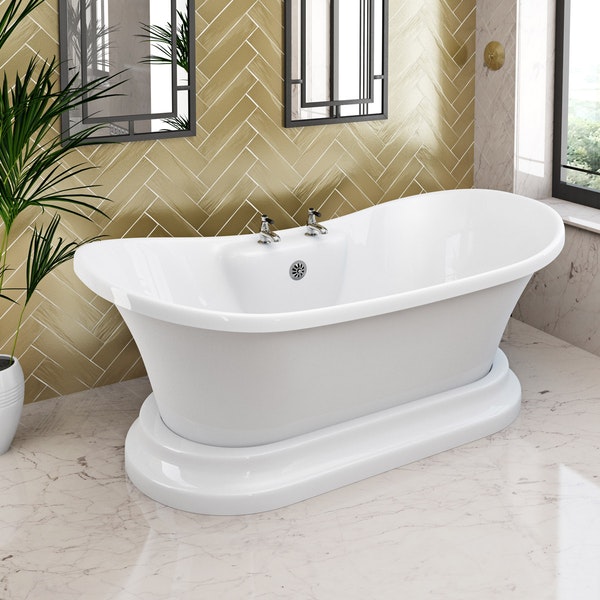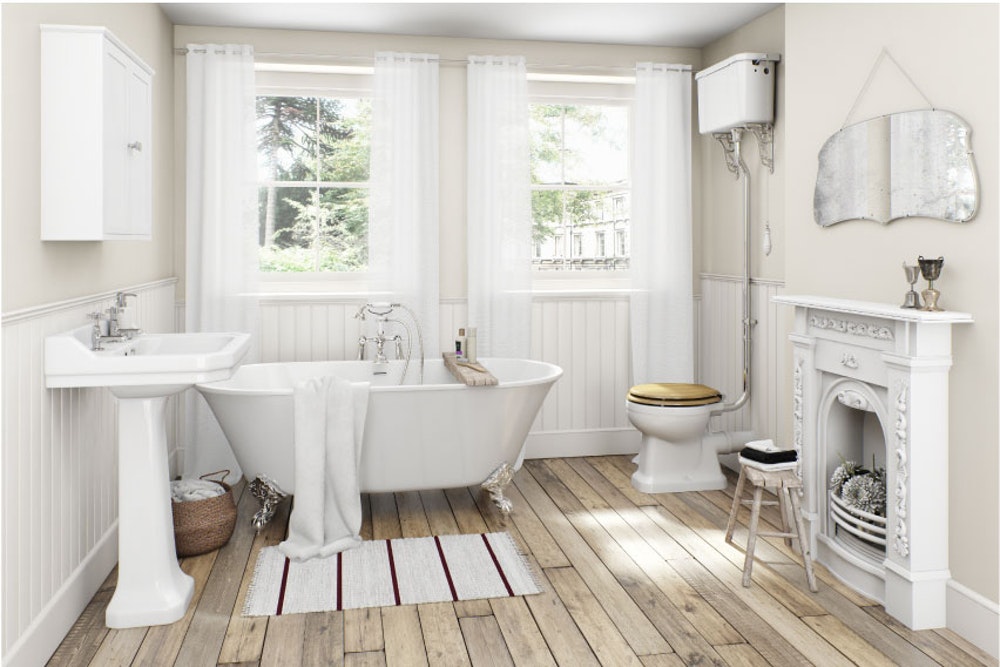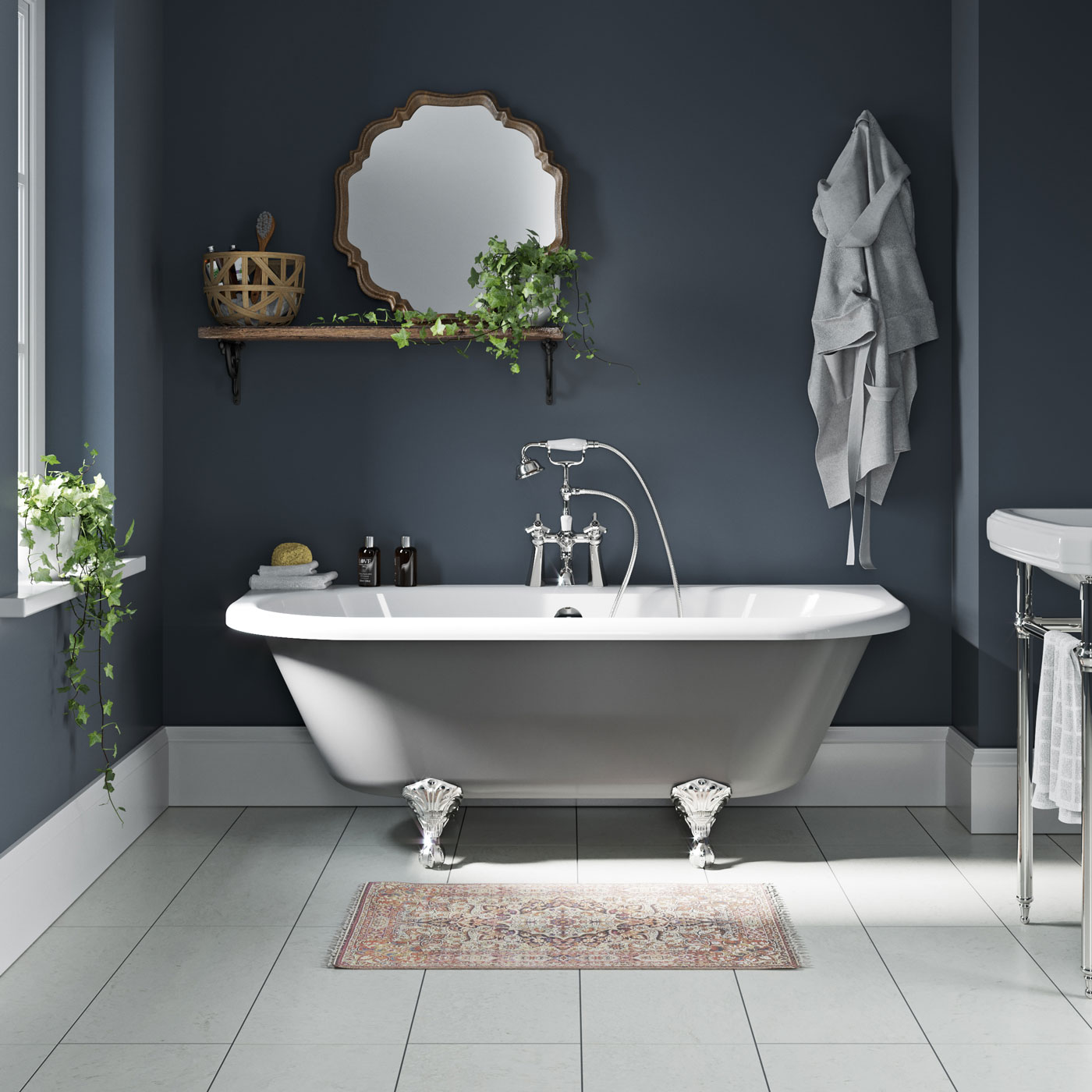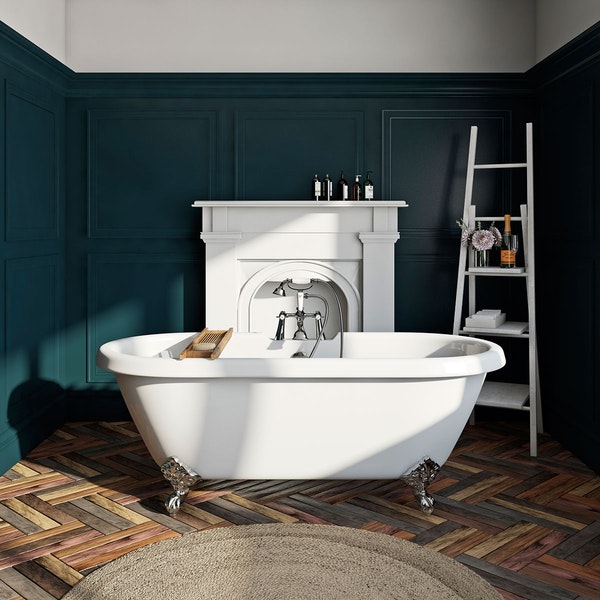Are you tired of scrubbing away at a grimy bath that never seems to stay clean for long? Does it feel like you spend an eternity getting rid of stains and you’re not getting your desired results? It doesn’t have to be that way! There is hope for a sparkling bath yet. In this step-by-step guide, we’ll lay out helpful advice on how to easily clean and maintain your bathtub so you can appreciate its beauty and keep it in tip-top shape for years to come. To be honest, achieving a clean and spotless bath isn’t rocket science. With simple and straightforward steps, you can have a refreshed and rejuvenated bathtub in no time!
Quick Explanation of Key Points
The best way to clean and maintain your bath is to use a nonabrasive bathroom cleaner and a scrubbing brush or sponge. After cleaning, rinse the tub thoroughly with warm water to remove any residue, then dry with a soft cloth or towel.
Routine Bath Cleaning Tip
Routine Bathtub Cleaning Tips
When it comes to keeping your bathtub clean and in good condition, it is important to establish a regular cleaning routine. Making sure your bathtub is routinely cleaned will not only help you keep it looking new for longer, but also prevent any potentially hazardous buildup of dirt or grime.
First and foremost, you should start by using a mild cleanser to remove any soap residue after each use. Make sure to dry the surfaces completely afterwards as this will prevent mold and mildew from forming. Additionally, adding a bathmat or rug can help protect the tub from scratches and other damage caused by everyday wear-and-tear.
Next, you may want to consider using a specialty bathtub cleaner once per week or so, depending on how often you use it and how much foot traffic it sees. These specialized cleaners contain powerful chemicals that will cut through deep-seated dirt and grime that other products cannot reach. It is important to note, however, that these products are quite harsh and may be harmful to inhale if used in enclosed areas—it is recommended that all windows and doors be opened while using them.
Finally, an ongoing maintenance routine such as waxing your tub every few months can help prevent water spots or stains from forming. The type of wax used will depend on your tub’s finish—some finishes require a more specialized wax than others—but regular waxing provides an extra layer of protection to the surface that is not easily removed with conventional cleaners alone.
While all of the above tips are important for maintaining your bathtub’s cleanliness and condition, there is no one way to keep it pristine; it ultimately depends on individual preference and personal usage patterns. Some people may choose a low-maintenance approach, while others may opt for more frequent upkeep; whatever works best for you is best in the end. Now that we’ve discussed proper cleaning tips, let’s look at specific cleaning solutions for keeping your bathtub clean:
Most Important Summary Points
Establishing a regular cleaning routine is important for keeping your bathtub in good condition. Clean the tub with a mild cleanser after each use and dry completely to prevent mold and mildew. Use a specialized cleaner on a regular basis to cut through deep-seated dirt, but open windows and doors for ventilation if doing so in enclosed areas. Wax the tub every few months for extra protection against water spots or stains. There is no one way to keep a tub clean, so find what works best for you.
Keeping Your Bath Clean: Cleaning Solutions
Having a clean bathtub not only promotes safety, but also gives a sense of comfort and pride in owning a spotless and pristine piece of bathroom equipment. There are various cleaning solutions on the market for cleaners to take advantage of, so it is important to research which one works best for your particular bathtub model or finish.
The most common cleaning solutions available include those that are acidic or alkaline based. Acidic cleansers are usually made up of citrus oils and solvents, while alkaline cleaners typically include ingredients like ammonia, bleach, or hydrochloric acid. Acids tend to be slower-acting and provide great coverage on stubborn stains, whereas alkaline cleaners tend to work more quickly and are more effective in removing hard water deposits from the bathtub’s surface.
It is important to keep in mind that these types of cleansers can be corrosive and damaging should too much be applied to certain surfaces. Metal bathtubs are particularly vulnerable to corrosion if an acidic cleaner is used for too long. To avoid any damage, it is best to check with the manufacturer’s instructions detailing which type of cleaner is safe for the particular model.
Cleaning solutions with natural ingredients—such as vinegar and baking soda—are some of the gentlest on tub surfaces while still being effective at removing dirt and soap scum., Additionally, they do not contain any harsh chemicals making them better for health and the environment alike. However, due to their nature, natural cleaning solutions usually require more frequent application in order to achieve optimal results.
When using any sort of chemical cleaner it is important to make sure that there is good air flow throughout the room and that any fumes created will dissipate quickly. It is also advised to use protective gloves or other clothing when handling the cleanser so as to protect against skin irritations or contamination from harsh chemicals like bleach.
Now that we’ve discussed keeping your bathtub clean with cleaning solutions, let’s move onto mild cleaning materials such as sponges and dishcloth which will also help maintain a safe and hygienic environment.
Mild Cleaning Solutions
Mild cleaning solutions are a great way to keep your bathtub looking its best with minimal effort. For general cleaning and spot-treating areas, mild solutions are a safe and effective option. Baking soda mixed with water creates an effective paste for scouring mildly stained or soiled surfaces on your tub. Additionally, natural cleaners such as vinegar and lemon can also be used to wipe down the walls of your tub, removing soap scum and build-up. However, it is important to note that these cleaning solutions may only be helpful in specific scenarios. If the stains have set over time, mild cleaning solutions may not have an effect on them.
Heavy-duty cleaning solutions are necessary when traditional mild methods fail to make a difference. In the next section we will look at effective ways to utilize strong cleaning products while still protecting the finish and porcelain of your bathtub.
Heavy-Duty Cleaning Solutions
When it comes to heavy-duty cleaning, chemical solutions are often the way to go. There are a multitude of different cleaners that you can use for your bathtub depending on the type of stain and build-up. The most common ingredients found in a heavy-duty tub cleaner are hydrochloric acid, lactic acid, sodium hydroxide, and phosphoric acid.
Hydrochloric acid is one of the most powerful cleaning agents available and should generally be used sparingly because it can cause damage if not properly diluted. Lactic acid is a milder solution and is best used for removing soap scum or calcium deposits. Sodium Hydroxide is also known as caustic soda and has excellent cleaning power but should be mixed with water before use. Phosphoric acid works well for removing rust stains, but it should never be mixed with any other cleaners.
However, many professionals debate the safety of using these chemicals in your bathtub due to their strength and potentially harmful effects on your skin or the environment. It’s important to wear protective gear like gloves when handling these solutions and always be sure to read the manufacturers instructions carefully. Additionally, avoid mixing any of these chemical solutions together as the combination could be dangerous or produce hazardous fumes.
Making sure to take proper safety measures along with using caution when applying chemical solutions will ensure that you get clean and sparkling results without any risks to your health or safety.
Now that you know what’s involved in cleaning your bathtub with chemical solutions, let’s move onto the next step: removing stains from your bathtub.
Removing Stains From Your Bath
There are a variety of ways to remove stains from your bath depending on the severity and type of stain. For light surface stains which may be caused by soap scum, mildew, or other debris, rubbing alcohol mixed with dish soap usually does the trick. Start by mixing equal parts rubbing alcohol and dish soap in a bowl, then use a sponge to evenly spread the mixture over the stained area before rinsing with lukewarm water.
For more stubborn stains such as hair dye, tea or coffee stains, tobacco smoke residue, or rust, you will likely need to use harsher chemicals like white vinegar or bleach. Mix 50/50 parts white vinegar and warm water and allow it to sit for 20 minutes on the stained tub before rinsing off. If this doesn’t work, you may need to try using a one-to-one solution of bleach diluted with cold water (depending on your tub material). Leave the bleach solution on the stained area for 15-20 minutes before rinsing off with lukewarm water. As a reminder, always wear protective clothing and eye wear when using harsh bleaches.
No matter what method you decide to use for removing stains from your bathtub, make sure to do an extra deep scrub at least once a week to keep your tub looking its best.
Now that you know how to remove stubborn stains from your bath we can move onto discussing removing mineral buildup from your bathtub – which is often uncorrectable by ordinary cleaners.
Removing Mineral Buildup
Removing mineral buildup from your bath can be a daunting task. Depending on the source of these minerals, you may have to choose between two different approaches. For mineral buildup from tap water, using vinegar or cream of tartar is often effective. You can create a paste with these items and apply it directly to the stained area. Let it sit for several hours before scrubbing with a nylon brush and rinsing off.
For mineral buildup caused by hard water, you may need to use harsher chemicals such as muriatic acid or bleach. While these products are more effective, they should be used with caution as they can damage the surface of your tub if used incorrectly – and cause physical injury if ingested. Always wear protective gloves and goggles when handling strong cleaners. Create a paste with either product and apply it to the stained area. Let it sit for 15 minutes and then scrub with a plastic or rubber scraper or brush. Rinse thoroughly afterwards.
Leading into the next section, remember that prevention is key in prolonging the life of your tub. In the following section, learn how to prevent future staining and mildew build-up so that you don’t have to resort to harsh chemicals down the line.
Preventing Future Stains and Mildew
One of the most important aspects of cleaning and maintaining your bathtub is preventing future stains and mildew buildup. Taking proactive measures, such as cleaning and drying regularly, can help keep your tub looking its best for years to come.
When it comes to preventative care, there are two main options: natural cleaners or store-bought products. Natural cleaners, such as vinegar and baking soda, are gentle on surfaces but may not be strong enough to tackle existing stains or tough grease and grime. Store-bought products, on the other hand, often contain harsh chemicals that can damage surfaces over time.
While both methods have their advantages and disadvantages, the decision ultimately depends on personal preference. Natural cleaners are safer for the environment, but may require more effort to achieve results. Store-bought products tend to be more effective but cause more wear and tear in the long run.
No matter which option you choose, using a weekly cleaner will ensure that your bathtub stays clean and free from mildew buildup. With regular maintenance and preventive care, your tub will stay in great condition for years to come.
Now that we have discussed preventative care tips for keeping your bathtub clean and free from mildew, let’s move on to the next section: Maintenance Tips for Your Bathtub.
Maintenance Tips for Your Bath
Regular maintenance of your bathtub can help stave off more serious problems that may necessitate replacement or refinishing. Here are some tips to keep in mind:
• Maintain the finish: Regularly cleaning and waxing your bathtub will help keep it looking new and help protect against damage. Depending on the material, you may need to use a mild cleaner and avoid abrasive materials. It’s also important to check up on the caulk around your bathtub to make sure it is still sealed properly.
• Check the drain: It’s important to check your bath drain regularly to make sure it is free of clogs and other debris. If you find a clog, use a product such as Drano or Liquid-Plumr to dissolve it. Make sure to always follow the instructions on the package carefully.
• Treat stains immediately: If your bath starts to show signs of discoloration or staining, act quickly by using a cleaner that is specifically formulated for the material in your tub. If the stain is particularly stubborn, try using a household cleaner containing bleach or an oxygen bleach like OxiClean.
• Repair chips and cracks: Minor chips and cracks should be filled in with specialized caulk or epoxy made specifically for use on bathtubs. Avoid using silicone sealant since it will eventually break down due to moisture exposure over time.
For people concerned about energy efficiency, there are special baths available which provide insulation from water loss, meaning less water is required for each bath or shower. The additional cost for these types of baths may be worth it in the long run if you tend to use lots of hot water for bathing. On the other hand, people looking for cheaper options should invest in a quality rubber liner that fits over their existing tubs in order to reduce water loss due to heat transfer through the walls of the tub itself.
Frequently Asked Questions and Responses
Are there any special techniques or precautions I should take when cleaning my bathtub?
Yes, there are a few special techniques and precautions you should take when cleaning your bathtub. First, it’s important to wear protective eyewear and gloves when using cleaning products. Second, always use non-abrasive cleaning products and never scrub too hard, as this can cause damage to the surface finish of your bathtub. Third, make sure to read all directions on any product you’re using and do a spot test first before applying it over a wider area. Finally, avoid getting cleaning products on other surfaces such as tile, porcelain and grout as they could be damaged. Follow these tips to help ensure that your bathtub is cleaned properly and remains in good condition for years to come!
How often should I clean and maintain my bathtub?
It is recommended that you clean and maintain your bathtub at least once a month. This will help prevent the build-up of dirt, soap scum, and other debris. Regular cleaning can also help protect the surface from discoloration and staining, which can occur due to minerals in the water or use of products like bubble bath. Additionally, a regular maintenance routine can help identify any potential problems before they become serious and expensive to repair.
What are the best cleaning products to use when cleaning a bathtub?
When it comes to the best cleaning products to use when cleaning a bathtub, I recommend using products that are specifically designed for such an activity. For example, a product like Simple Green All-Purpose Cleaner is great for getting rid of tough grease and grime in your bathtub. It’s also non-toxic and biodegradable so you know you’re not polluting the environment as you clean. Additionally, there are several specialized cleansers on the market today that are specifically formulated for cleaning bathtubs. For example, CLR Bath & Kitchen Cleaner kills 99.9% of bacteria and germs while being safe enough to use on every type of tub surface. Making sure you have the right product can make all the difference when it comes to giving your tub a thorough clean!






